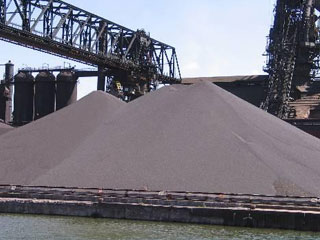
Mineral Concentrating Plant
Mineral concentrating plant usually mainly contains three parts: mineral crushing process, mineral grinding process, and mineral thickening process. Different minerals may adopt different concentrating methods. Here we take iron ore concentrate plant as an example:
At the crushing stage, the raw iron ore is crushed by the iron ore crushers (such as the jaw crusher, cone crusher). Through this process, the raw material will be crushed into about 0-10mm, which ensures less iron ore grinding process. It is well-known that more crushing process and less grinding process is good for utilizing the valuable ore.
When the crushed iron ore meet the standard size, they are fed to the subsequent equipments for grinding and separating process. In this stage, the ball mills and the spiral classifiers are usually used in this stage.
Ground by the ball mill and separated by the spiral classifiers, the small iron ore particles are conveyed to magnetic separator and the filter. After the iron ore concentrating stage, the iron ore grade is able to meet the commonly requirement of the international market.
To know more details, just be free to contact us. You can get the professional answer immediately by chat with our engineer on-line. You can also get the ideal answer by leaving your contact information; our engineer will answer you in the following 24 hours.
Tips
Iron ore and its application
Iron ore is mined in about 50 countries. The seven largest of these producing countries account for about three-quarters of total world production. Australia and Brazil together dominate the world’s iron ore exports, each having about one-third of total exports.
- Almost all of the iron ore that is mined is used for making steel;
- Used in metallurgy products, magnets, high-frequency cores, auto parts, catalyst;
- In medicine, tracer element in biochemical and metallurgical research;
- In paints, printing inks, plastics, cosmetics (eye shadow), artist colors, laundry blue, paper dyeing, fertilizer ingredient, baked enamel finishes for autos and appliances, industrial finishes;
- As pigment, in polishing compounds, metallurgy, medicine, magnetic inks, in ferrites for electronics industry;

